Key takeaways:
- Selective mutism is an anxiety disorder affecting children’s ability to speak in certain social situations, despite being articulate at home.
- Emotional and social repercussions include isolation, loneliness, and low self-esteem due to difficulties in communication.
- Strategies such as creating a supportive environment, role-playing, and using visual aids can help individuals overcome communication barriers.
- Building confidence involves small victories, social scripts, and positive affirmations to empower individuals in social situations.
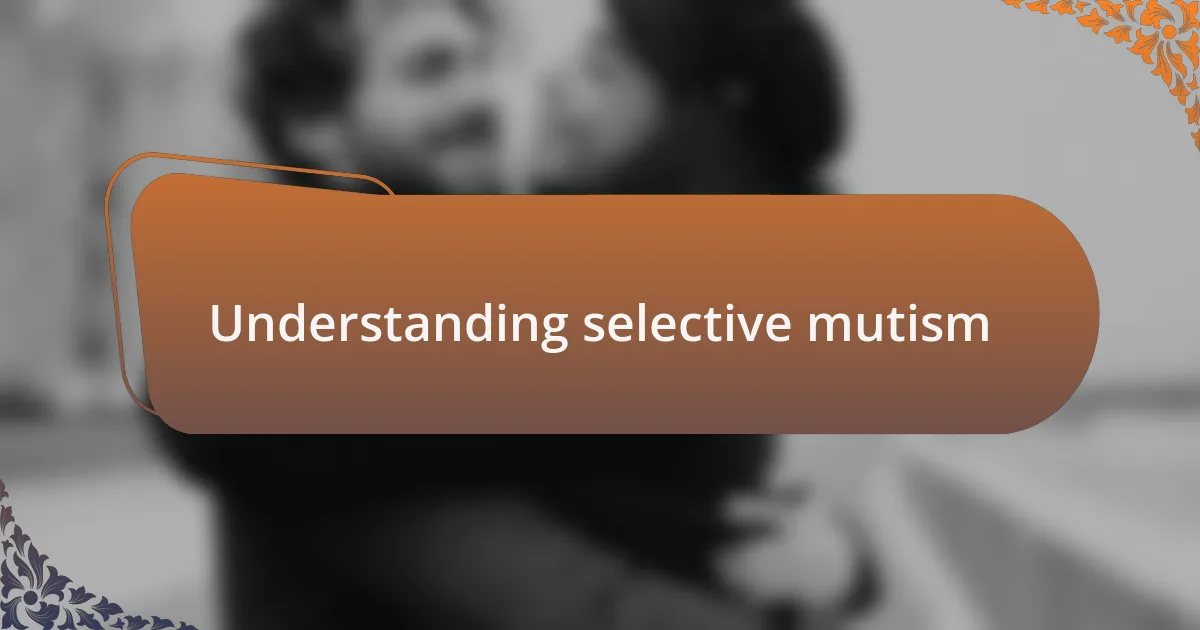
Understanding selective mutism
Selective mutism is more than just shyness; it’s a complex anxiety disorder that primarily affects children, causing them to be unable to speak in certain social situations, despite having the ability to speak in other environments. I remember when a friend’s child, typically so vibrant at home, would suddenly freeze and become mute in school, leaving her teachers puzzled. How can someone so articulate at home become a shadow in public spaces?
This condition often emerges alongside other anxiety disorders, creating a web of challenges for those affected. I often think about the internal struggle they face—knowing exactly what they want to say but feeling an overwhelming barrier that silences them. There’s a deep emotional turmoil behind their silence that many people just don’t see or understand.
Observing selective mutism in children reveals a unique interaction with their environment. For instance, I’ve seen kids who came alive in familiar places like their backyard, letting their imaginations run wild with every word. Yet, put them in a classroom or a new social setting, and it’s like the lights dimming—what a stark contrast! This all underscores the critical need for awareness and understanding from parents, educators, and peers alike to support these children on their journey to finding their voice.
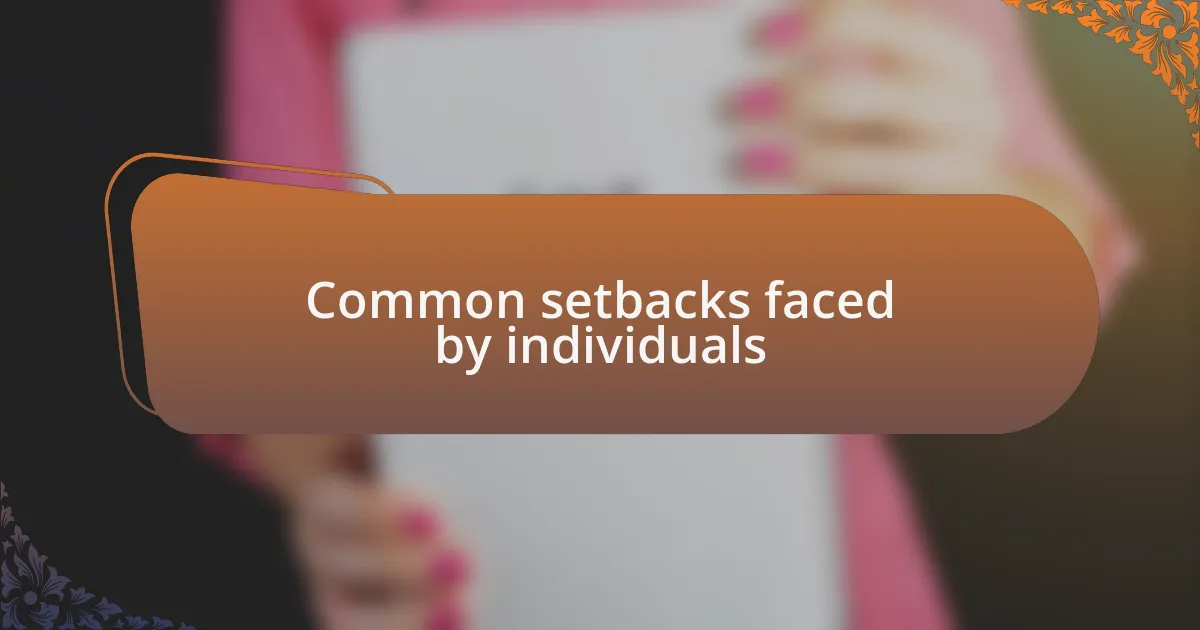
Common setbacks faced by individuals
Many individuals with selective mutism encounter significant emotional setbacks. For example, imagine the frustration of a child who knows exactly how to express themselves but feels trapped within their own silence during a group activity. It’s heartbreaking to see that internal battle, where the desire to connect clashes with a paralyzing fear of judgment.
Additionally, the social repercussions of selective mutism can be daunting. I’ve witnessed children who miss out on playdates and birthday parties, not because they don’t want to participate, but due to their anxiety about speaking to peers. This isolation can lead to feelings of loneliness and the impression that they are somehow different, affecting their self-esteem in profound ways.
Furthermore, educational setbacks are common as well. I’ve seen children struggle to voice their answers in class despite their comprehension of the material. Imagine the pressure they feel when their classmates speak up easily while they remain silent, wondering, “What if I just can’t say it?” These experiences highlight the need for tailored support to help children navigate both their emotional landscape and their educational journey.
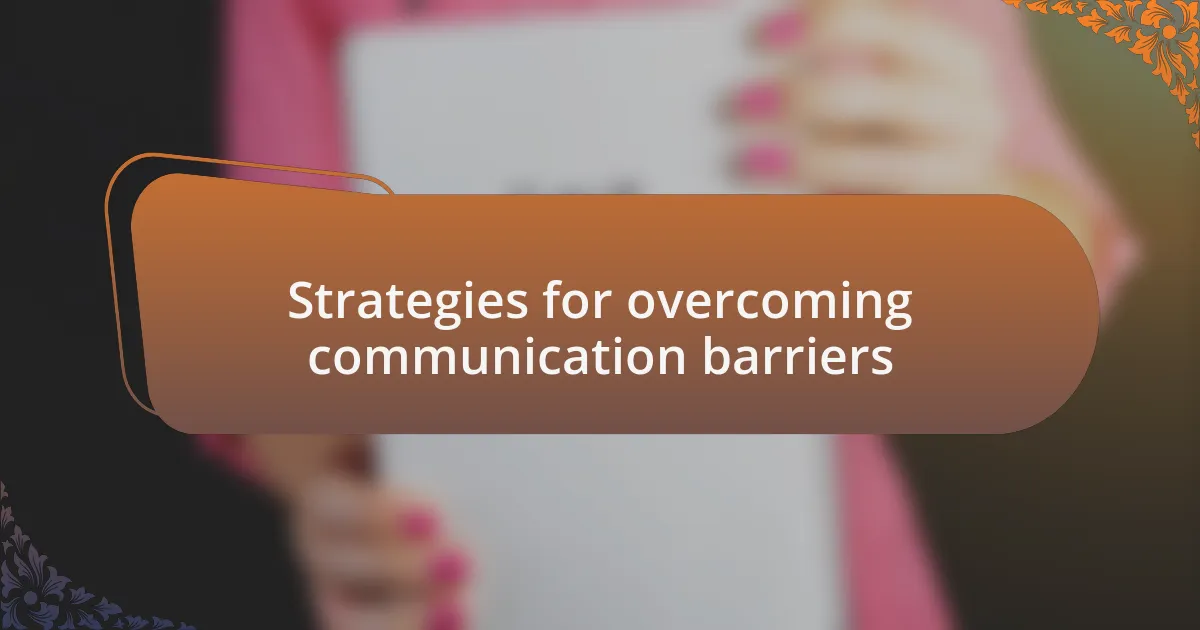
Strategies for overcoming communication barriers
One effective strategy for overcoming communication barriers is creating a safe and supportive environment. I have found that simply establishing trust can encourage individuals to express themselves. When children feel secure and understood, they may be more willing to take small risks in communicating. For instance, in one case, a child I worked with started using a communication board at home, which surprisingly opened the door to verbal attempts during therapy sessions.
Role-playing can also be a transformative approach. I once facilitated a session where we acted out common social scenarios, like answering a question in class or ordering food. By demystifying these situations in a fun, low-pressure way, I noticed that participants began to speak more freely. It’s fascinating how allowing someone to rehearse their responses can build their confidence, so why not give this a try with a friend or family member?
Incorporating visual aids can further aid in bridging communication gaps. I remember working with a client who thrived on using picture prompts during interactions. These visual cues not only helped them express their thoughts but also sparked conversations that they had previously avoided. This experience taught me that sometimes, the tools we use can profoundly enhance our ability to connect with others.
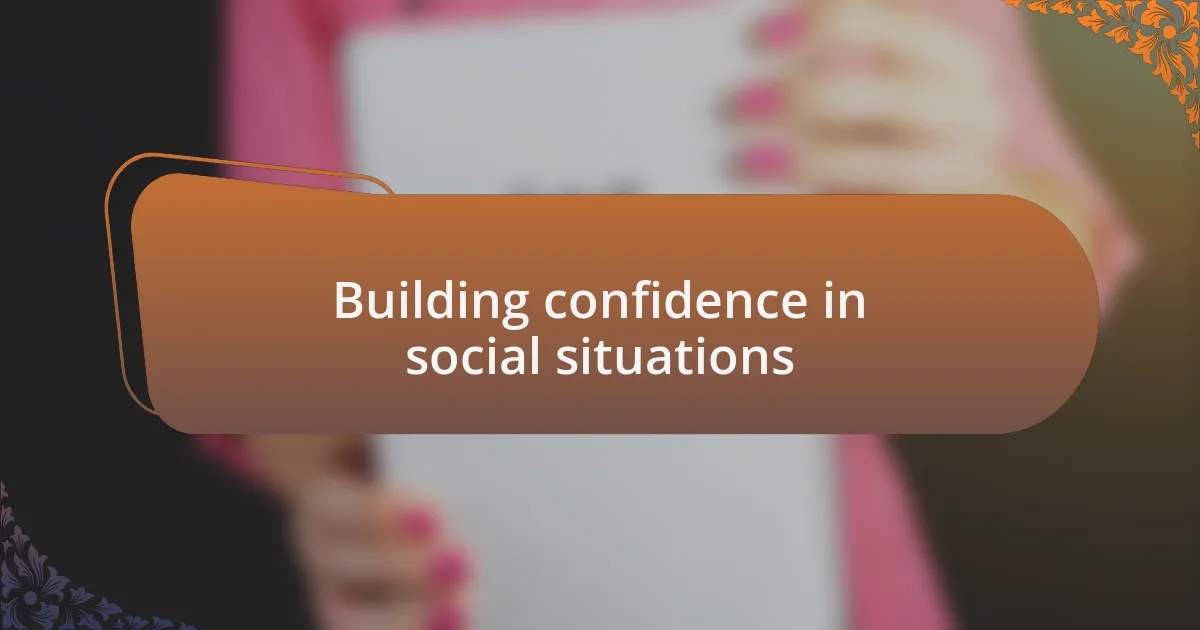
Building confidence in social situations
Building confidence in social situations often requires a personalized approach. I vividly recall a young girl I worked with who struggled to talk in groups. We began by celebrating little victories, like her nodding in agreement during discussions, which gradually led her to share her thoughts aloud. Isn’t it interesting how small steps can snowball into greater expression?
Another effective method I’ve seen involves creating “social scripts.” I guided a boy who always felt anxious during recess to draft a few go-to lines for starting conversations. Once he memorized these and practiced them with his family, he felt more equipped to engage with peers. It makes you wonder: what could a simple script mean for someone facing communication challenges?
Additionally, fostering positive affirmations plays a crucial role in building confidence. In my experience, incorporating daily affirmations can shift mindsets. I had a client who began each day by stating affirmatively that he was capable and worthy of friendships. This shift in mindset empowered him, leading to genuine connections with his classmates. How transformative might daily positivity be for you or someone you know?
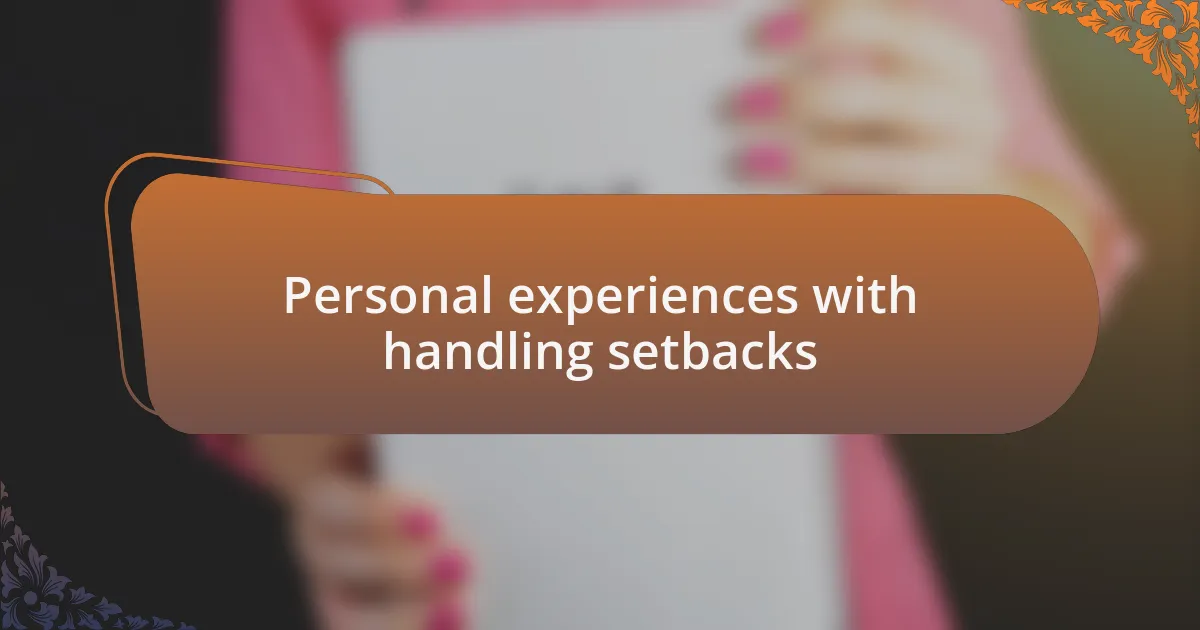
Personal experiences with handling setbacks
Handling setbacks is a natural part of the journey, and I’ve faced my share of challenges. I remember a time when a client I worked with experienced a significant setback after a promising breakthrough. She had successfully spoken up in class, but then, overwhelmed by anxiety, she clammed up again for several weeks. It hurt to see her struggle, yet it reminded me that progress isn’t always linear. Have you ever felt like you were taking two steps forward and one step back?
Another experience that stands out involved a young boy who had learned to speak in one-on-one settings but froze in larger groups. After a particularly tough week, we sat down to reassess. Instead of focusing on the setback, we analyzed what triggered his anxiety and developed alternative strategies that incorporated slow exposure to larger audiences. It’s amazing how simply revisiting our approach can lead to fresh perspectives, isn’t it?
I’ve found that sharing these ups and downs with others can also be incredibly freeing. When I opened up about my own setbacks, I noticed how many others related to my experiences. One individual even shared their story of initially failing at public speaking. Their vulnerability created a safe space for discussion, highlighting that setbacks often bring people together. How valuable is it to know you’re not alone in your journey?